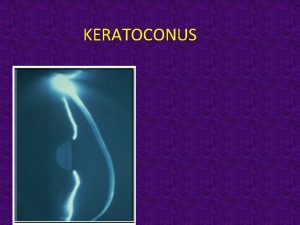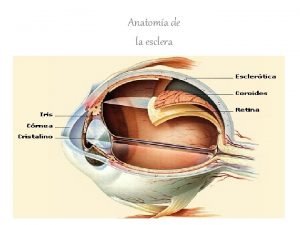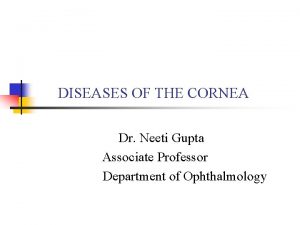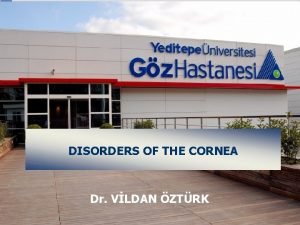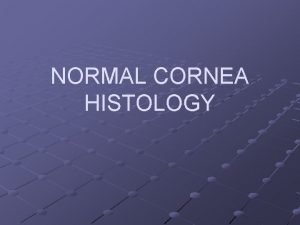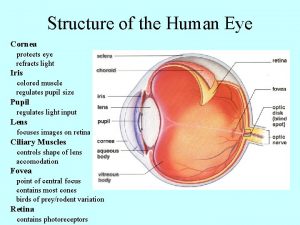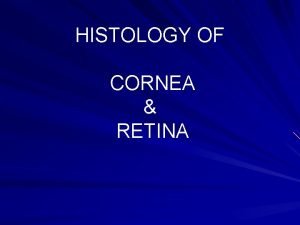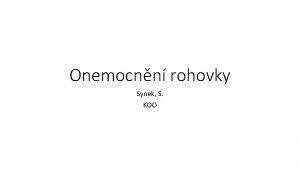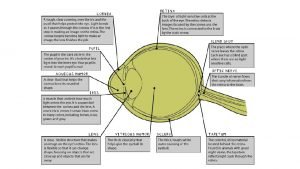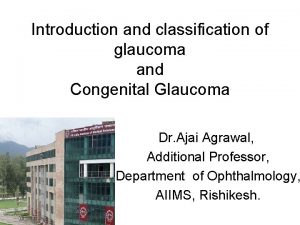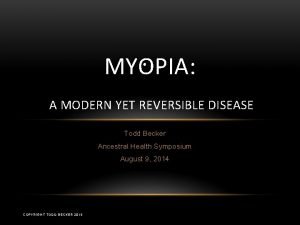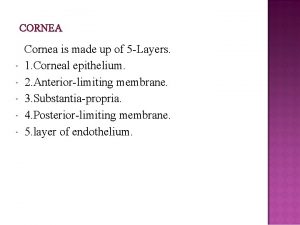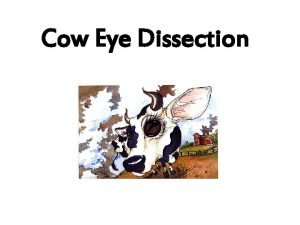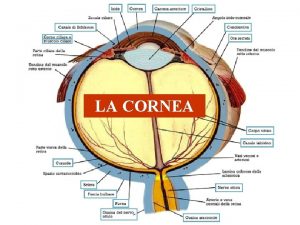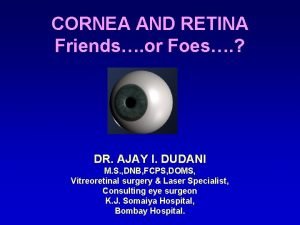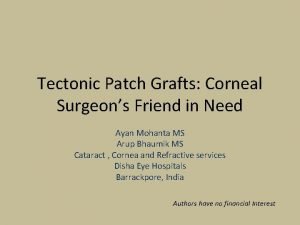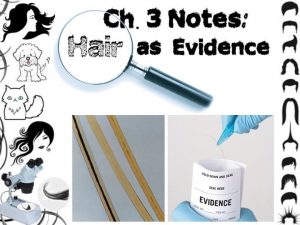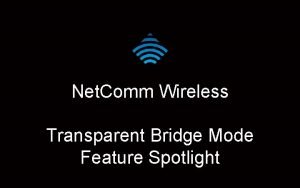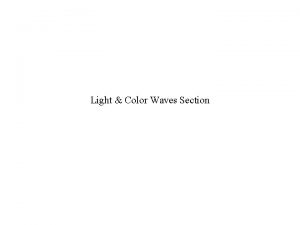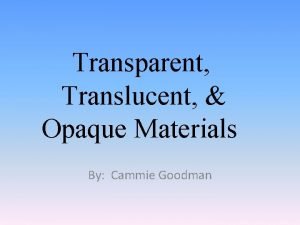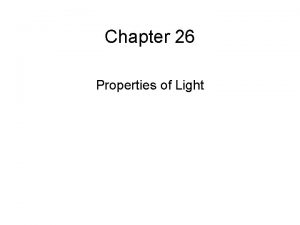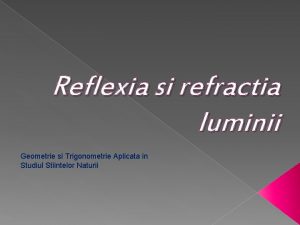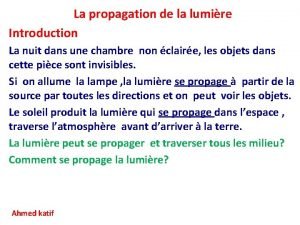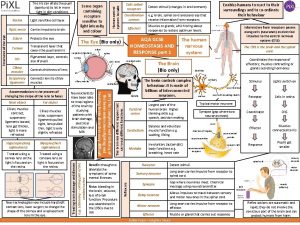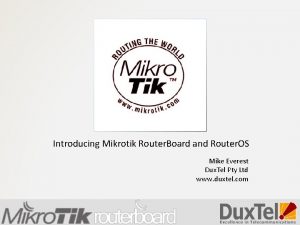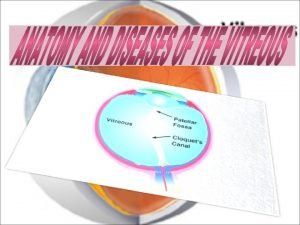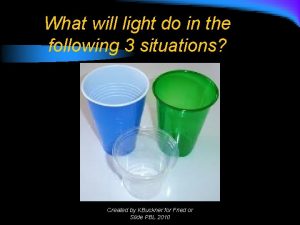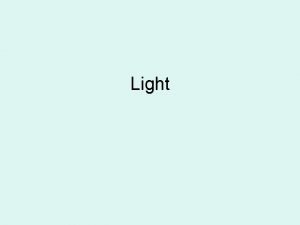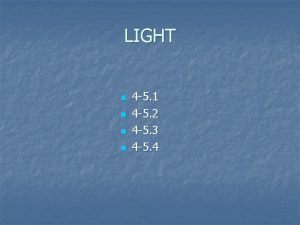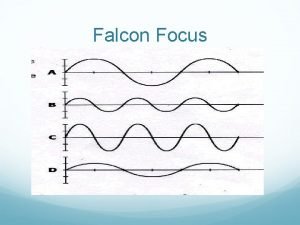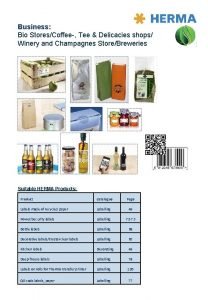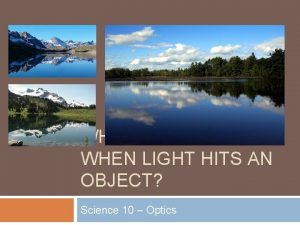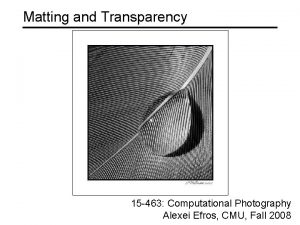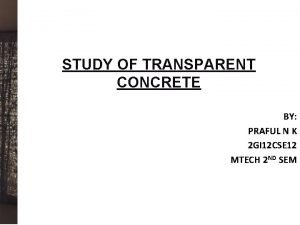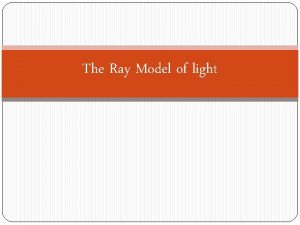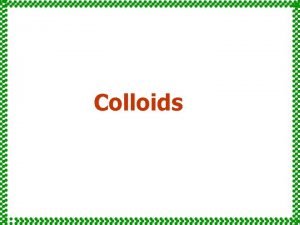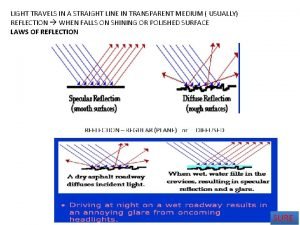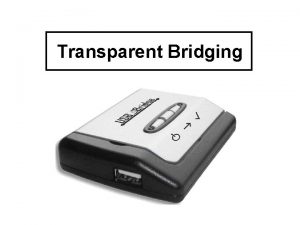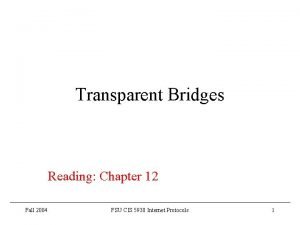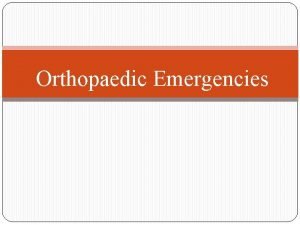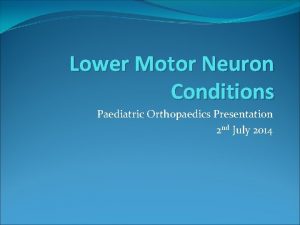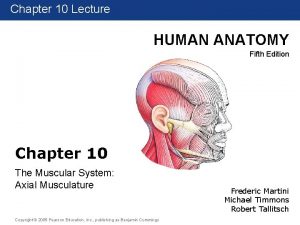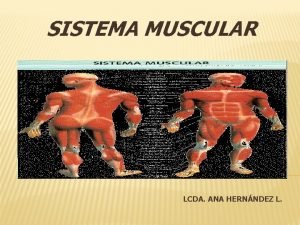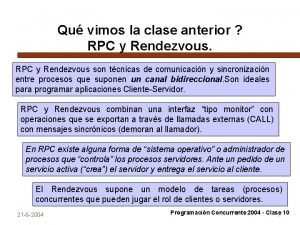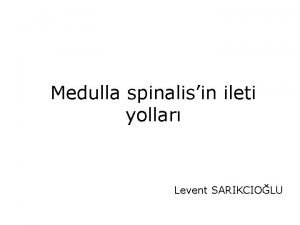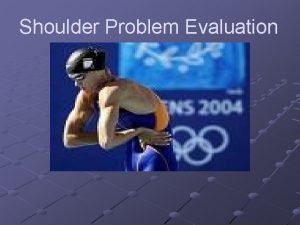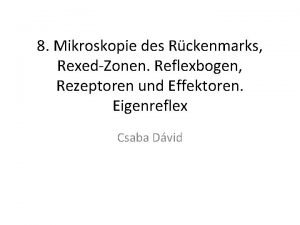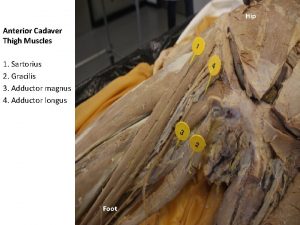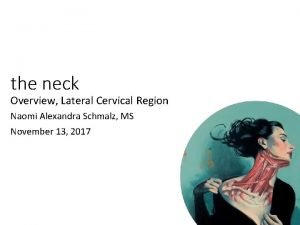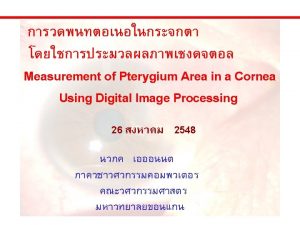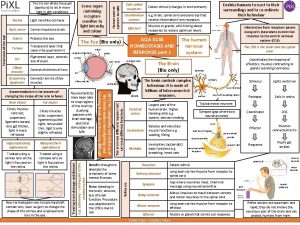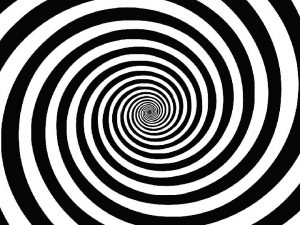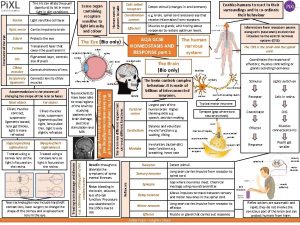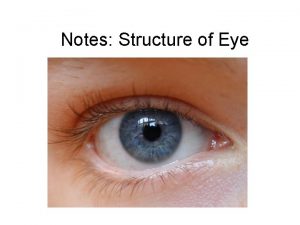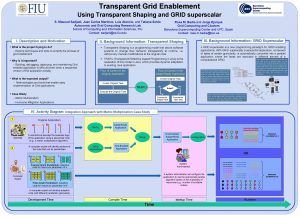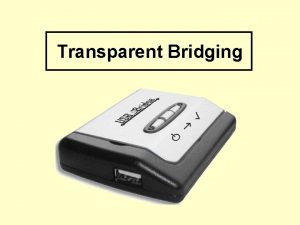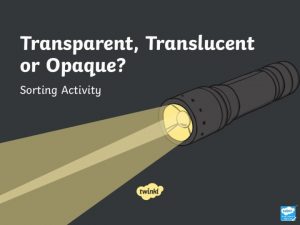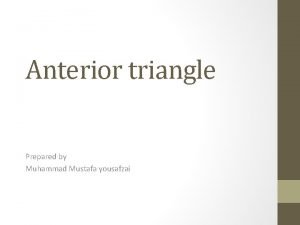CORNEA Dr Sarika Gadekar Transparent anterior 16 th


































































































- Slides: 98

CORNEA Dr Sarika Gadekar


Transparent anterior 1/6 th of the eyeball Curvature of cornea is more than that of rest of the eyeball Limbus – is the junction of sclera and cornea Refractive index is 1. 376

Corneal Diameter (mm) Horizontal Radius of curvature Vertical Anterior 11. 7 10. 6 7. 8 Posterior 11. 7 6. 5 Central Corneal Thickness (mm) 0. 5 -0. 6 Peripheral 1. 2


Avascular Nourished by aqueous, limbal capillaries and oxygen in the tear film Nerve supply– Ophthalmic division of the 5 th cranial nerve (long ciliary nerves) Unmyelinated located in the stroma subepithelial corneal plexus intraepithelial corneal plexus Dense nerve supply sensitve to pain and temperature No sense of propioception


HEALTHY NORMAL ENVIRONMENT

CORNEAL TRANSPARENCY State of Relative Dehydration Reasons – Hydrophobic epithelium and endothelium Endothelial pump Relative hypertonicity of tears and aqueous Absence of blood vessels, pigment Presence of unmyelinated nerve fibres Uniform RI of all layers Uniform spacing of the collagen fibrils in the stroma


ENDOTHELIAL PUMP ANOMALIES

Loss of transparency. Corneal edema

Loss of transparencyvascularization

Ghost vessels

FUNCTIONS Allow transmission of light Refraction Maintainence of structural integrity Protecting eye from infective organisms, noxious substances , UV radiation

PATHOLOGY Keratitis – Corneal inflammation Superficial Keratitis – Involving epithelium and Bowman’s membrane Superficial Punctate Keratitis – Involving epithelium and Bowman’s membrane in discrete patches Deep Keratitis – Inflammation in the stroma Punctate Epithelial Erosions – non specific tiny slightly depressed epithelial defects which stain with fl

SUPERFICIAL PUNCTATE KERATITIS

PATHOLOGY Epithelial Defect – Loss of epithelium Abrasion / Erosion – Loss of epithelium without inflammation. Heals within 12 -24 hours. Corneal Ulcer – Loss of epithelium with inflammation in the surrounding cornea Inflammation Infiltration

Epithelial defect Corneal ulcer

CORNEAL OPACITY / SCAR Final outcome of any corneal inflammation / When the clarity of the cornea is disturbed For a opacity to form the Bowman’s layer has to be breached In younger patients tends to clear Eg Post PRK even after Bowman’s layer has been breached Aetiology Acquired after a healed corneal ulcer (Scar) Hereditary in corneal dystrophies (Opacity)

CORNEAL OPACITY Nebular Slight opacification of the cornea Details of iris seen Involves anterior 1/3 ofstroma

CORNEAL OPACITY Macular More dense Details of iris cannot be seen but iris and pupillary margin are visible Involves upto 2/3 of stroma

CORNEAL OPACITY Leucoma Dense white, totally obscuring the view of the iris details and pupil Nearly complete stroma is involved

CORNEAL OPACITY Adherent Leucoma If the iris is adherent to the back of the leucoma After a perforating corneal ulcer Corneo-iridic Scar If the iris tissue is incarcerated in the scar tissue

EFFECT OF CORNEAL Nebula OPACITY in the pupillary area interferes with vision more than an eccentrically located leucoma Loss of brightness of image in small central / paracentral opacities Superimposition of entoptic image of opacity upon clear image of external object

TREATMENT OF CORNEAL OPACITY Nebular – Use Contact lenses Leucoma’s with visual potential – Keratoplasty Leucoma’s without visual potential – - Cometic contact lenses - Tattooing with India Ink, Gold

Corneal edema

ENDOTHELIAL PUMP ANOMALIES

Bullous keratopathy treatment Rx the cause Bandage contact lens Topical Conc. Saline soln/ 15%Na. Cl ointment Strip off epithelium, cover with conjunctiva Full thickness keratoplasty

FILAMENTARY KERATOPATHY Club shaped epithelial threads. Long standing corneal edema, viral keratitis, dry eyes, collagen vascular diseases

Prominent nerves Keratic precipitates

hypopyon

Clinical features of corneal involvement vision Photophobia Lacrimation CCC Foreign body sensation Pain Whiteness of cornea

Corneal surface evaluation – placido’s disc

keratometry

pachymetry

Specular microscopy

CORNEAL INFLAMMATIONS ARE BASED ON location Superficial Deep Suppurative Non- suppurative etiology Infectious Hypersensitivity/ auto-immune marginal keratitis/ ulcer Immune-mediated phlyctenular conjunctivitis d/t Tb interstitial keratitis d/t syphilis Dystrophic Degenerative Neoplastic traumatic

Superficial purulent keratitis- Epithelial defect with stromal infiltration Superficial non-purulent keratitis – viral, acanthamoebic, microsporiodiosis, onchocerciasis Deep stromal keratitis – Systemic infections with limbal spread – Tb, Syphylis Immune mediated – disciform keratitis Scleral inflammation – sclerosing keratitis • • •








BACTERIAL CORNEAL ULCER / PURULENT KERATITIS Etiology Eoxgenous – pseudomonas, staph. Aureus and albus, pneumococcus, N. gonorrhoea, E. coli N. gonorrhoea and C. diphtheriae invade normal epithelium


STAGES OF CORNEAL ULCER Progressive stage ulcer is saucer- shaped over-hanging edges floor has necrotic material grey zone of infiltration surrounding edema

Regressive stage line of demarcation of PMN’s infiltration and swelling reduces necrotic material shed off – transparent ulcer Stage of healing vascularization (fascicular ulcer) corneal opacity irregular surface - facet


Sequelae

SEQUELAE Keratectasia/ ectatic cicatrix Keratocele / descmetocele Perforation – advantages – corneal nutrition, pain, rapid cicatrization Pseudocornea with anterior synechia Iris prolapse Secondary glaucoma Anterior staphyloma Corneoiridic scar Anterior capsular cataract Corneal fistula Total iris prolapse with pseudocornea Spontaneous expulsion of lens Intraocular h’hage Expulsive h’hage Endophthalmitis panophthalmitis

TREATMENT OF UNCOMPLICATED CORNEAL ULCER Control infection – broad spectrum antibiotics Symptomatic relief - painkillers Cleanliness Heat – prevent stasis and encourage repair Rest - cycloplegics Protection Corneal scrapings – floor and edges – gram and geimsa stain; culture on blood agar, chocolate agar, sabourads dextrose agar and non- nutrient agar with e-coli overlay for acanthamoeba

Antibiotic Concn. frequency Fort. Cephazolin 5% (50 mg/ml) 1 hrly for 48 hrs decrease Fort. Tobramycin 1. 3% (13. 6 mg/ml) “ Fort. Gentamycin 14 mg/ml “ Fort. Vancomycin 0. 3% “ fluroquinolones Eye drops “

Cauterization with carbolic acid (100%) or trichloroacetic acid (10% - 20%) – caustic and antiseptic Corneal opacity – rigid gas-permeable CLs, lamellar keratoplasty, full thickness PK, cosmetic CLs

TREATMENT OF PERFORATED ULCER Small perf. In pupillary area – rest, BCL Tissue adhesive – cyanoacrylate glue Treat secondary glaucoma

HYPOPYON ULCER Ø Ø Ø Staph, strep, gonococci produce hypopyon ulcer Pseudomonas and pneumococci Common in old, debilitated, alcoholics After measles or scarlet fever Pneumococci – ulcus serpens Greyich white/ yellowish disc like lesion Opacity greater at edges, lustreless cornea with hypopyon Ulcer spreads on side of densest infiltration with simultaneous cicatrization Infiltration just anterior to descmet’s membrane – inflammatory process going on both sides – perforation Rx - same

FUNGAL CORNEAL ULCER Aspergillus, fusarium, candida albicans H/o injury with vegetative matter Less symptomatic Dry ulcer, feathery margins, yellow demarcation line Wessely ring

Conjunctival cong , CCC Hypopyon thick , immobile Rx – local natamycin, amphotericin B drops and miconazole ointment for aspergillus and fusarium. topical nystatin for candida severe cases – oral antifungals endophthalmitis – intravitreal antibiotic with antifungal therapeutic PK

VIRAL KERATITIS Herpes zoster, adenoviruses, measles, vaccinia, molluscum contagiosum etc May present as Punctate epithelial erosion Punctate epithelial keratitis

Punctate epithelial erosions Punctate epithelial keratitis Recurrent epithelial erosions Fluorescein +ve Assoc. with conjunctivitis Rx lubricants non- epitheliotoxic antibiotics Steroids contraindicated Deeper epithelial layers Assoc with opacities in BM and stroma Fluorescein –ve Stain with rose bengal Rx lubricants steroids

HERPES SIMPLEX KERATITIS HSV 1 Periodic attacks – carrier Ocular manifestations – blepharitis, conjunctivitis, keratitis and iridocyclitis Starts as superficial punctate keratitis Minute white plaques – in groups - desquamate

Epithelial – dendritic/ geographic Stromal – necrotizing/ nonnecrotizing endothelial

EPITHELIAL KERATITIS Whitish epithelial plaques in groups Desquamate form erosions – superficial punctate keratitis Coalesce form geographic/ dendritic ulcer

DENDRITIC ULCER - PATHOGNOMONIC Chronic ulcer, exacerbation for weeks to months High recurrence rate Corneal sensations

Diagnosis – immunofluorescence, culture of epithelial scrapings Rx Epithelial keratitis- topical antivirals 2 – 3 weeks 5%IDU drops 5 times a day 1%trifluridine 4 times a day 3% acyclovir ointment 5 times a day 3% vidarabine ointment 5 times a day prophylactic antibiotics lubricants Stromal keratitis – topical steroids, topical antivirals and cycloplegics Oral acyclovir 400 mg 5 times a day for herpetic iridocyclitis Oral acyclovir 400 mg BD for 6 months – 1 year reduces recurrence

HERPES ZOSTER KERATITIS/ ZOSTER OPHTHALMICUS Hutchinson sign Nummular keratitis

Varicella zoster virus Presentation – elderly, depressed immunity Focus – Gasserian ganglion – ophthalmic division of trigeminal nerve Supra-orbital, supra and infra trochlear, nasal, rarely infra-orbital Unilateral, does not cross mid line Bilateral in immunocompromised patients Fever, malaise, severe neuralgic pain – eruption Lids red and edematous Ocular complications arise as eruption is subsiding Associated with involvement of nasociliary nerve

Numerous round spots are seen in epithelium, involve stroma to form a coarse subepithelial punctate/ nummular keratitis Anesthetic cornea Associated with iritis, scleral nodules, secondary glaucoma, acute retinal necrosis, 3 rd, 6 th and 7 th cranial nerve paralysis Rx 800 mg acyclovir 5 times a day for 10 days opioid analgesics skin lesions – topical antivirals ocular involvement – topical antibiotic iritis, scleritis – topical steroids with antivirals optic neuritis, 3 rd nerve palsy – systemic steroids lubricants neurotrophic ulcers – tarsorraphy penetrating keratoplasty

IMMUNOLOGICALLY MEDIATED DISEASES

Phlyctenular keratitis • Allergic reaction to tuberculo protein • Grey raised nodule • Nodule breaks down into yellow ulcer • Pain, photophobia • Rx topical steroids antibiotics cycloplegics

Marginal ulcer/catarrhal ulcer

Mooren’s ulcer/ chronic serpiginous ulcer/ rodent ulcer Commonly seen in elderly Rare, degenarative, superficial ulcer starts at margin – spreads circumferentially Erosion initiated by autoimmune lysis of epithelium – release of collagenolytic enzymes (collagenase, proteoglycanase)

Starts as grey infiltrates – break down to form ulcercoalesce Ulcer spreads circumferentially and axially Overhanging edge, vascularised base Severe persistent neuralgic pain, lacrimation Rarely perforates Malignant progression in young adults Diagnosis is by exclusion Rx 4 -7 mm conjunctival strip excision perforation – cyanoacrylate glue with BCL lamellar keratoplasty with IV methotrexate may halt process

INTERSTITIAL KERATITIS Infective/ allergic in origin Children 5 -15 years of age with inherited syphylis Delayed interstitial keratitis in adults >30 years Bilateral, 3 or more weeks interval Involves deeper layers of stroma - no ulceration CCC, one or more hazy patches in deep stroma Start near margins – progress centrally Whole cornea become hazy, lustreless Iris dimly visible

Deep, radial, brush-like vascularization – salmon patches Opacity extends beyond vessels Cornea clears from margins towards centre Ghost vessels persist Disease is a uveitis, keratitis is secondary Diagnosis – clinical signs of syphilis serology Rx systemic penicillin – shorten disease course topical lubricants, steroids, cycloplegics penetrating keratoplasty

Disciform keratitis Immunological stromal reaction Seen in adults Resembles Arthus reaction Central grey disc in mid stroma Descmet’s folds Permanent opacity Mild uveitis Rx topical steroids Topical antivirals Endothelitis

CORNEAL DEGENERATIONS

Arcus senilis Lipoid infiltration of cornea Elderly Starts as crescentric grey line/ whitish band concentric with upper and lower corneal margins Clear zone between limbus and opacity Arcus juvenilis Rare <40 years of age Abnormal serum lipid profile

Band shaped keratopathy Hyaline infiltration of superficial parts of stroma with deposition of calcareous salts Whitish band in interpalpebral area Clear limbal area Chronic uveitis, blind shrunken eye, apakic eyes with silicon oil Hyperparathyroidism, vit D poisoning, Sarcoidosis Rx scraping, EDTA, Excimer laser PRK

ECTATIC CONDITIONS Keratoconus • Inflammatory causes – keratectasia/ anterior staphyloma • Non- inflammatory causes – keratoconus, keratoglobus, pellucid marginal degeneration

KERATOCONUS Congenital – manifests after puberty - bilateral Acquired – trauma, VKC, Down’s syndrome Vision - d/t myopic astigmatism Signs – Munsen sign ‘oil – droplet’ sign Vogt striae, fleischer ring acute hydrops

corneal reflex on placido’s disc keratometry, pachymetry (thinness), corneal topography

Rx early stages – spectacles rigid gas permeable CL penetrating keratoplasty/ lamellar keratoplasty intra corneal ring segment inserts collagen cross linkage

KERATOGLOBUS Congenital, hereditary, bilateral Hemispherical protrusion of cornea Rx same as keratoconus

CORNEAL SURGERIES

Penetrating keratoplasty

(B) PENETRATING KERATOPLASTY. (C) ANTERIOR LAMELLAR KERATOPLASTY . (D) DEEP LAMELLAR ENDOTHELIAL KERATOPLASTY. (E) DESCEMET'S STRIPPING AUTOMATED ENDOTHELIAL KERATOPLASTY. (F) DESCEMET'S MEMBRANE . ENDOTHELIAL KERATOPLASTY

PENETRATING KERATOPLASTY

Cornea is Immunologically priviliged Cadaveric donors Within 6 hours of death (rarely upto 12 hours) Short term preservation 48 – 72 hours Intermediate term preservation upto 30 days Long term preservation (cryo) upto 1 year Indications: optical therapeutic Corneal allografts : full thickness, partial thickness, patch graft Rotational autograft

Complications: Early – wound leak, shallow AC, persistent epithelial defect, secondary glaucoma, uveitis, graft edema, graft failure Late – after 3 weeks – graft rejection, infection, secondary glaucoma, astigmatism Very late – upto 1 year – graft rejection, wound dehiscence Graft failure Common in vascularized cornea, regrafts Rejection can be epithelial, stromal or endothelial Symptoms: pain, vision, photophobia, ccc Signs: epithelial rejection line, endothelial rejection line, stromal edema, ccc, KPs Rx Steroids


REFRACTIVE SURGERIES

PHOTOTHERAPEUTIC KERATECTOMY

Indications Superficial corneal opacities like band shaped keratopathy, superficial scars, oil droplet keratopathy etc Excimer laser (198 nm) Contraindications: Thin corneas, dry eyes, deeper opacities Side effects: hypermetropia, corneal haze Complications: persistent epithelial defect, infection, hypermetropia, secondary keratectasia


Keratoprosthesis Indications: bilaterally blind with severe OSD like SJ syndrome, recurrent graft rejection Pre-operative requisites: Minimum PL+ Posterior segment Normal Materials used : PMMA, teflon, dacron mesh, osteoodontokeratoprosthesis, cartilage or nail Complications: extrusion, glaucoma, RD, uveitis, membrane formation
 Dr daniel tarquinio
Dr daniel tarquinio Oil droplet sign
Oil droplet sign Cornea concava
Cornea concava Corneal transparency maintained by
Corneal transparency maintained by Oil droplet reflex
Oil droplet reflex Outermost layer of cornea
Outermost layer of cornea Cornea
Cornea Keratitis eyes
Keratitis eyes Hipodermis funcion
Hipodermis funcion Semmelweis egyetem szemészeti klinika budapest
Semmelweis egyetem szemészeti klinika budapest Cornea
Cornea Bowman membrane of cornea
Bowman membrane of cornea Keratititis
Keratititis Cornea plana
Cornea plana A clear fluid that helps the cornea keep its rounded shape
A clear fluid that helps the cornea keep its rounded shape Trabeculodysgenesis
Trabeculodysgenesis Latin syllable divider
Latin syllable divider Zennioptical
Zennioptical Cornea
Cornea Cornea is made up of
Cornea is made up of Carcinoma de celulas escamosas
Carcinoma de celulas escamosas Cornea verticillata
Cornea verticillata Hiperplasia cornea de la pezuña
Hiperplasia cornea de la pezuña Cow eye retina
Cow eye retina Refractive apparatus of the eye
Refractive apparatus of the eye Crocodile shagreen
Crocodile shagreen Dellen corneale
Dellen corneale Retina and cornea
Retina and cornea Tectonic graft cornea
Tectonic graft cornea Corneal light reflex
Corneal light reflex Cornea homály
Cornea homály Robert rauschenberg riding bikes
Robert rauschenberg riding bikes Digital transparent processor
Digital transparent processor Middle layer and largest part of the hair shaft in humans
Middle layer and largest part of the hair shaft in humans What is transparent bridge mode
What is transparent bridge mode What has historically been the main use for plane mirrors
What has historically been the main use for plane mirrors Transparent swimwear
Transparent swimwear Thin transparent covering of the eye
Thin transparent covering of the eye Translucent object example
Translucent object example Transparent command prompt
Transparent command prompt Visible light that shines on a pane of transparent glass
Visible light that shines on a pane of transparent glass Transparent syllables
Transparent syllables Fortigate transparent mode
Fortigate transparent mode Transparent assignment template
Transparent assignment template Dsl adalah
Dsl adalah Linux transparent firewall
Linux transparent firewall Ce este refractia luminii
Ce este refractia luminii I become a transparent eyeball figurative language
I become a transparent eyeball figurative language Transparent awards
Transparent awards Translucide
Translucide Transparent eye layer that protects iris and pupil
Transparent eye layer that protects iris and pupil Transparent vs routed firewall mode
Transparent vs routed firewall mode Vrrp mikrotik
Vrrp mikrotik Tmo: transparent memory offloading in datacenters
Tmo: transparent memory offloading in datacenters Jirancom
Jirancom Yipled
Yipled Disadvantages of transparent concrete
Disadvantages of transparent concrete A transparent jelly-like lamp is formed
A transparent jelly-like lamp is formed Is lampshade transparent translucent or opaque
Is lampshade transparent translucent or opaque Hdfs transparent encryption
Hdfs transparent encryption Ass transparent
Ass transparent Odontoclasia meaning
Odontoclasia meaning What is light
What is light Ray model of light
Ray model of light Ibm worm cloud storage
Ibm worm cloud storage Translucent object
Translucent object Transparent translucent opaque
Transparent translucent opaque 4labels
4labels What happens to light when it hits an object
What happens to light when it hits an object Semi transparent
Semi transparent Disadvantages of transparent concrete
Disadvantages of transparent concrete Transparent ray model
Transparent ray model Examples of transparent materials
Examples of transparent materials Efficient, transparent, and equitable
Efficient, transparent, and equitable Liquide transparent
Liquide transparent Not transparent solution suspension colloid
Not transparent solution suspension colloid Slimline 750 refractive index
Slimline 750 refractive index Effective frequent-shopper programs are transparent.
Effective frequent-shopper programs are transparent. What is transparent bridge
What is transparent bridge Transparent bridges
Transparent bridges Nexus rules c spine
Nexus rules c spine Anterior horn cell disease
Anterior horn cell disease Skeletal muscles anterior view
Skeletal muscles anterior view Músculo escaleno anterior
Músculo escaleno anterior Nuchal line muscle attachment
Nuchal line muscle attachment Ya vimos en la clase anterior una forma para encontrar
Ya vimos en la clase anterior una forma para encontrar Anterior choroidal artery
Anterior choroidal artery Guia canina
Guia canina Tr spinotectalis
Tr spinotectalis Anterior torso muscles
Anterior torso muscles Rotator cuff sits
Rotator cuff sits Anterior urethra
Anterior urethra Umbilical regions
Umbilical regions Longitudinal lie
Longitudinal lie Anterior inferior iliac spine
Anterior inferior iliac spine Reflexbogen
Reflexbogen Fisura supraorbitaria
Fisura supraorbitaria Thigh muscles cadaver
Thigh muscles cadaver Alexandra schmalz
Alexandra schmalz

